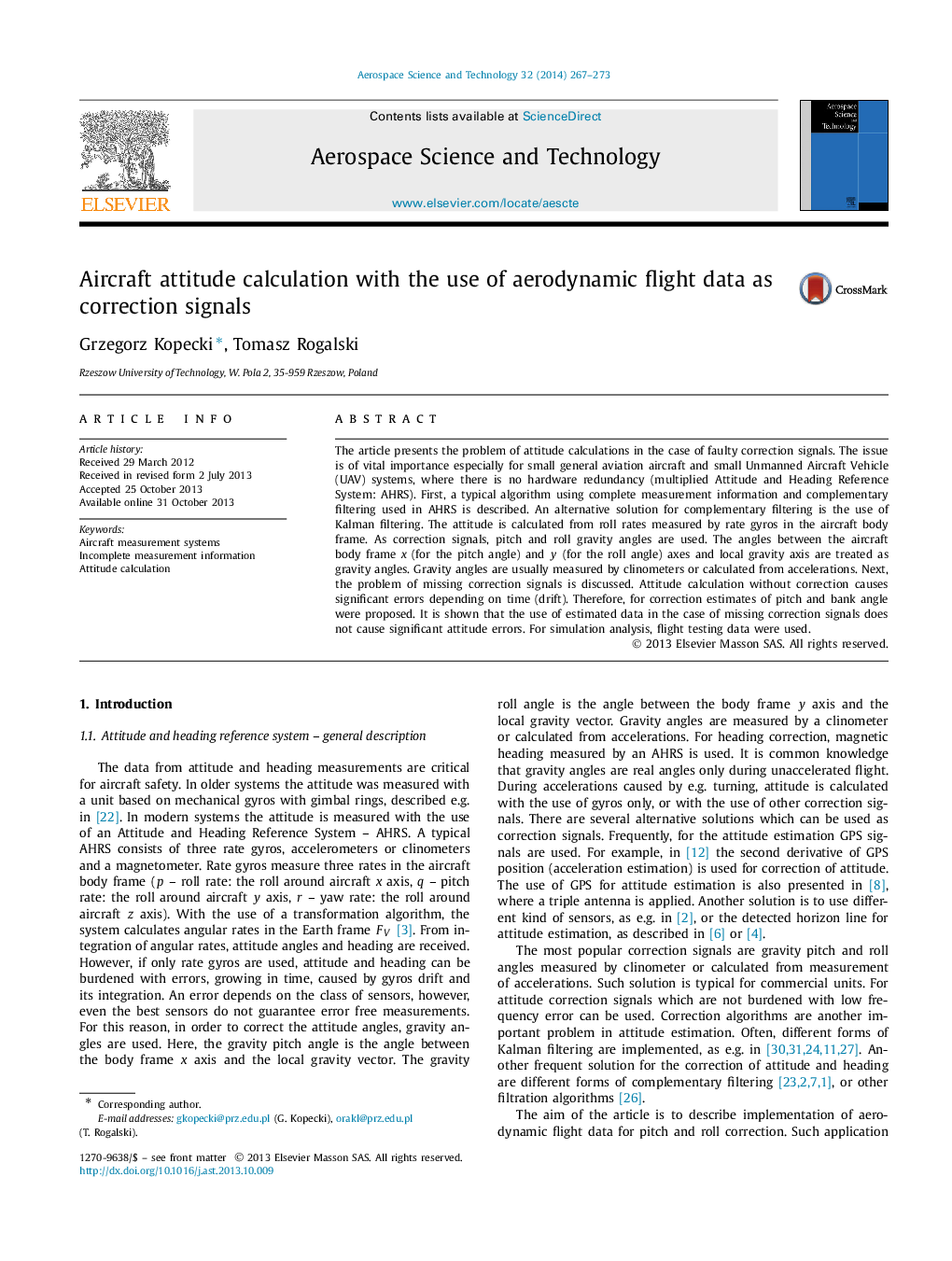| Article ID | Journal | Published Year | Pages | File Type |
|---|---|---|---|---|
| 1718114 | Aerospace Science and Technology | 2014 | 7 Pages |
The article presents the problem of attitude calculations in the case of faulty correction signals. The issue is of vital importance especially for small general aviation aircraft and small Unmanned Aircraft Vehicle (UAV) systems, where there is no hardware redundancy (multiplied Attitude and Heading Reference System: AHRS). First, a typical algorithm using complete measurement information and complementary filtering used in AHRS is described. An alternative solution for complementary filtering is the use of Kalman filtering. The attitude is calculated from roll rates measured by rate gyros in the aircraft body frame. As correction signals, pitch and roll gravity angles are used. The angles between the aircraft body frame x (for the pitch angle) and y (for the roll angle) axes and local gravity axis are treated as gravity angles. Gravity angles are usually measured by clinometers or calculated from accelerations. Next, the problem of missing correction signals is discussed. Attitude calculation without correction causes significant errors depending on time (drift). Therefore, for correction estimates of pitch and bank angle were proposed. It is shown that the use of estimated data in the case of missing correction signals does not cause significant attitude errors. For simulation analysis, flight testing data were used.
